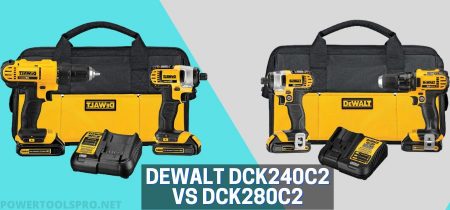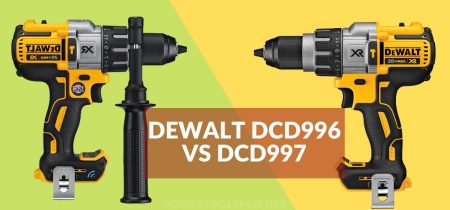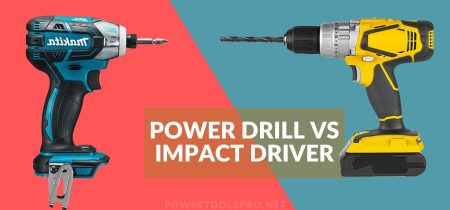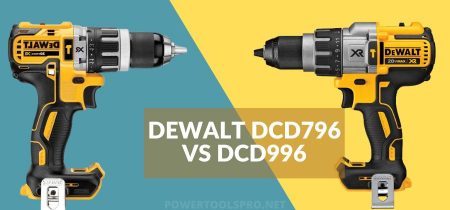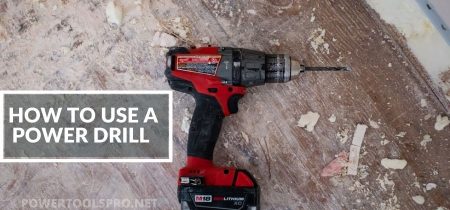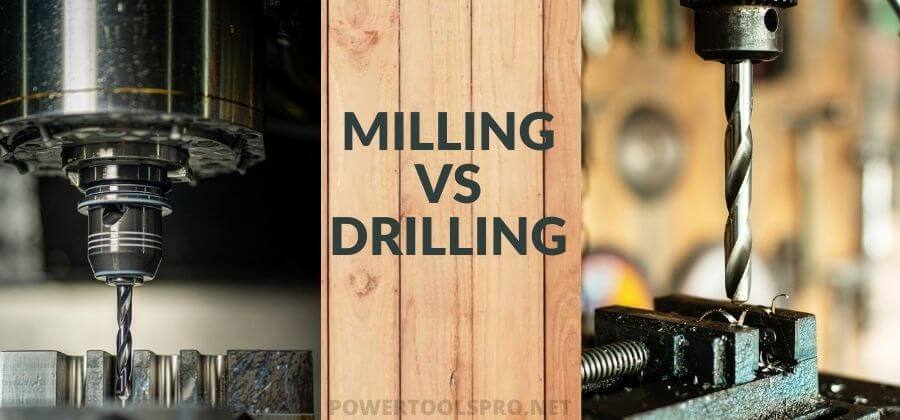
If you’re new to the construction and manufacturing industry, milling and drilling may be a new term for you. However, you might wonder what milling vs drilling is and what is the difference?
Milling is the process of machining by making use of rotatory cutters to remove material whereas the act of making a hole in any material by boring with a drill is known as drilling.
For beginners, it can be hard to find out the difference between milling and drilling machines. Although both these tools look and function similarly, they differ widely from each other.
Firstly, the milling machine can make the right use of drill bits to cut either horizontally or vertically, but drilling machines cannot cut horizontally even with the compatible milling bits. So, you need to use the drill press or handheld drill to accomplish drilling, However, for milling, you must have a dedicated milling machine.
Both of them can be used in a variety of situations, and a machinist or hobbyist manufacturer can better understand the difference between the two. If you are still confused about the difference between milling and drilling and have got many other questions related to these machinery processes, continue reading with us to get answers to your logical questions!
What is Drilling Press and How Does it Work?
Drill Press Basics
A drill press, also known as a Drilling machine, is a device for creating holes in any kind of hard substance. It is mostly used for making round holes or simply driving fasteners but can also be used to enhance or enlarge any already existing cylindrical holes. Additionally, the drill press has the capability to add both depth and width to already driven holes and indentations.
Aside from this, the Drill press is mostly used in metalworking, woodworking, construction, machine tool fabrication, and utility projects. Some drilling machines are specifically designed to be used for space and miniature applications while others are not.
A full-sized drill press is extremely heavy, expensive, and can take up wider floor space in your work area. Remember, it lacks portability but ensures high-end precision.
Working
Drilling machines vary greatly in size, power, and speed. You can fit it with a bit either as a drill or a driver and secure it with chuck.
Grounded in fact, the drill press does most of the work with the incorporated handle which controls the descent of a spinning mechanism known as “Spindle”. On the end of this spindle, you will see attached chuck to hold the bit. The spindle moves vertically to do the trick and it creates holes with much precision and greater ease. Moreover, they incorporate a depth stop which creates holes having consistent depth.
As the drill press is a standing tool, so you can easily set your desired angles. That’s why it demands less work from you. You just need to clamp the material onto the angle and let the machine do its work. Unlike powered hand drills which rely on arm strength, the drill press doesn’t burden you in this regard.
The good thing about their design is that its highly customizable and allows you to expand the existing features such as sanding, chiseling, and deburring tools.
What is a Milling Machine? How does it work?
Milling Machine Basics
Before knowing about the machine, we must know what is milling? In actuality, milling is a process that can be accomplished with the help of a machine that uses rotating cutters to remove the material from your workpiece. It’s a very common manufacturing process that is used in industries and machine shops to manufacture numerous products and parts with good precision in different sizes and shapes.
Stunningly, the milling machines are also called “Multi-Tasking Machines (MTMs) of both milling and turning the materials. Plus, they are also excellent to drill, boring and cutting an array of used materials. They incorporate cutters that assist in removing the materials from the surface of any workpiece. With the aid of milling machines, you can perform any operation starting from small to large objects.
Working
On the moral high ground, a milling machine is based on the milling cutters which are also known as end mills and they have cutting edges on the end surfaces that can be used on the workpiece by drilling. To enable peripheral milling, the milling cutters come with extended cutting surfaces on each side. While working you will find the cutters highly durable and less resistant.
If you want to get the surface finish, the milling side cutters come with regular ridges to do the trick. The distance between ridges completely depends on the cutter’s diameter, feed rate, and quantity of cutting surfaces.
Moreover, the milling machines work well while performing gang milling. To enable Gang milling, two cutters will be used in a setup just like horizontal milling. These cutters align in a way to perform a uniform operation which is excellent to manufacture duplicate parts.
Milling Machine vs Drilling Press – What is the Difference?
Both milling and drilling are the most widely used machining processes. Most inexperienced people think that these two processes are the same. But with a bit of practice and background knowledge, one can tell the differences easily.
As both these processes are intended to remove materials from a workpiece but don’t assume them the same. If you’re planning to start a manufacturing business, you should be aware of the fundamental differences between these two. Let’s discuss the major differences between milling and drilling.
1- Motion Axes
The major difference between milling and drilling is the direction in which they cut through the material. The drill press requires you to move the attachment in a vertical motion to remove or pierce the parts of your workpiece. On the other hand, milling machines can be used in both vertical or horizontal motion to cut specific shapes, fine-tune edges, and boreholes.
2- Workpiece’s Position
The way you position the workpiece against the cutting attachment is also a major difference between them. While operating with a drilling press, you don’t require to move the stock against the spinning spindle as it remains stationary on the table. Instead, you need to position the material by using the table clamp and can move the cutter with the help of a hand lever.
On the other side, for the milling machine, the stock doesn’t stay stationary on the worktable. Rather, you can swiftly move it against the cutting spindle or rotating blade to produce the targeted shape and design.
3- Accuracy
Accuracy is highly needed in manufacturing. In terms of this aspect, the milling machine is highly accurate to use in multiple work areas. The worker may move the material in different directions to improve alignment and enable greater accuracy.
On the other hand, the drill press can’t produce such accurate outcomes. As you need to place the material with your hand on the table, so the chances of errors increase.
4- Types of Operation
When it comes to mill vs drill press, drilling is a manual process just like many other manufacturing processes. But the drill press isn’t that difficult to operate, you can learn some basics to accurately perform the work.
Whilst, the milling machines can be completely controlled by computer programs. So, they never fail to deliver your desired results.
5- Size
Another major and easy-to-spot difference between milling machines and drilling machines is the size of the tools. The size of the drill press can vary from very small to very large, which means you can either get a floor or benchtop drill press as per your needs.
Oppositely, the milling machines are much larger and are designed to place only on the workshop floor. As they are carved to perform heavier jobs, so there’s no point in having smaller milling machines for bigger tasks.
6- Price
If you’re a budget-conscious person, the price can be a bigger thing when it comes to milling machines vs drill presses.
As the milling machines offer extra features and high-end accuracy, so they are more expensive than a drill press. On average, the milling machine costs a few thousand dollars and the drill press costs a few hundred dollars.
Can you Drill through a Milling Machine?
The precise answer to this question is “YES”, you can use the milling machine to drill holes. The milling machines work superior to drills because they are heavy and highly accurate. As milling machine comes with computer controls, so you won’t go wrong while drilling different sized holes with greater accuracy.
Pros and Cons of Milling Machine
REASONS TO BUY
✓Highly precise compared to other machines
✓It allows you to cut horizontally as well as vertically
✓We find it perfect for taper and drilling wider holes
✓It comes with flexible computer controls for better cutting processes
✓It uses moisture to prevent friction and overheating
✓It doesn’t produce heavy vibration or shaking like low-quality drills
✓You will get cleaner results with almost no metal debris
✓It works so quickly that you don’t need to move it on the same surface again
✓Unlike a drill press, it allows rotation and movement while cutting
✓You can rotate the bit to achieve unique angles and cuts
✓Its size and durable construction can give support to heavier machines without damaging itself
✓It doesn’t require many numerous adjustments or speed changes which you have to suffer in drilling presses
✓You can perform multiple cuts at a time
✓It’s highly customizable and excellent in reducing human errors
REASONS TO AVOID
✗It’s too big in size, bulky and heavy
✗Requires extensive process to move from place to place
✗Its compatibility with computers makes it pricier
✗Too complex to handle during the repairing process
✗Don’t have any portable options to choose from
✗A bit complicated to operate
Pros and Cons of Drilling Machine
REASONS TO BUY
✓It’s not as heavy as a milling machine
✓Its simplicity to operate is the real attraction
✓Excellent choice if you have low budget
✓It doesn’t bother you to use computer components to do the trick
✓It performs quick operations from start to end
✓Not too complex to use. Just turn it on, place it on target, set the speed, and start drilling
✓The most loved benefit of a drill press is that you can find a portable model to take it anywhere
✓Highly accurate and good to use for beginners
✓If you know the basic controls, you can’t go wrong with it
✓Benchtop drill press allows you to work effortlessly
✓The battery-operated drill presses lower the burden of moving the table
✓A drill press is quite cheaper than a milling machine
REASONS TO AVOID
✗You can only move it vertically
✗Unable to rotate or cut in multiple directions
✗Isn’t multi-tasking as a milling machine is
✗It might be challenging to perfect tapering
✗Not have computer-generated precision which makes it less accurate
✗Beginners might not be able to target precise points
Summary – Milling vs Drilling – Which one is better?
A milling machine is ideal for tasks like cutting a component to the exact measurement, producing a flat piece, and creating other geometric forms than a round or square hole. If you’re seeking high-end accuracy, milling might be an excellent alternative. If you want high-end precision, milling can be an ideal option for you.
On the other hand, a drill press is a go-to tool that is superb in making quick holes that don’t need much accuracy. Moreover, they aren’t too tricky to use.
But which one is better for you? If you have a good budget, we can clearly say that a milling machine is better than a drilling machine because it can also be used as a drill press with almost no additional add-ons and is highly accurate compared to a drilling machine. But it takes up more space and cost. The good thing is that milling is multi-functional and you will find it good for almost all kinds of jobs including the works that a drill press won’t do for you.
Our Recommendation
Overall, if you want to perform both milling and drilling, we recommend you to get a milling machine as it can do both tricks for you. But if drilling is your main focus and you have space or budget issues, then a dedicated drilling machine could be the right choice for you.
